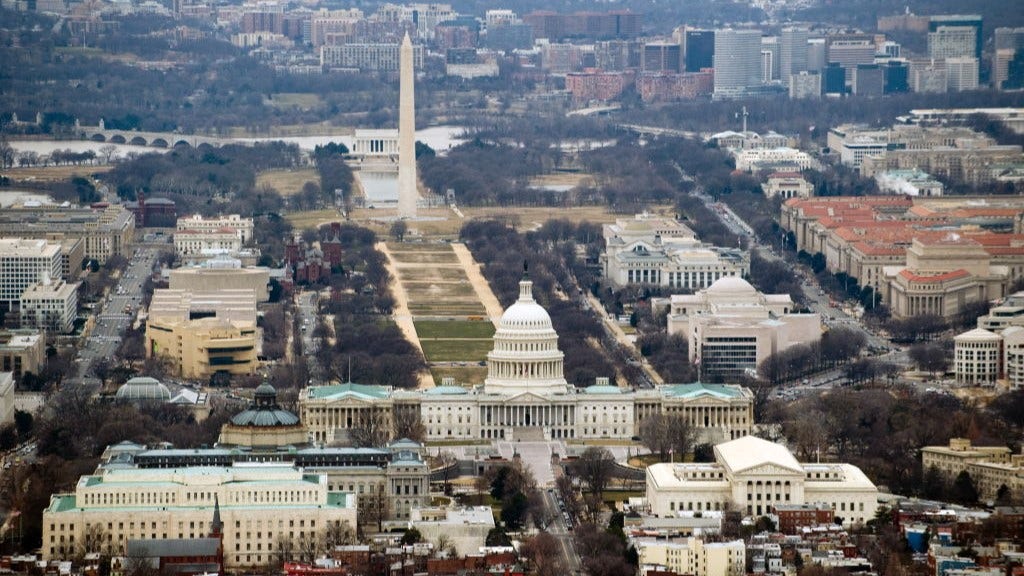Wyoming archaeology and conservation groups, an eagle expert and two Albany County residents are asking a judge to stop a federal energy bureau and the U.S. Energy Secretary from advancing a vital step in building up to 149 wind turbines in the southeastern Wyoming county.
The critics say the devices will kill eagles and bats, harass wildlife, blast the locals with constant noise, and mar the landscape and the skyline of the Ames Monument National Historic Landmark.
The $500 million Rail Tie Wind Project is a proposed utility scale wind energy system scheduled to be built in southern Albany County, with its turbines measuring 500 to 675 feet tall — about the height of the Seattle Space Needle. It’s estimated to span across about 26,000 acres, prompt the construction of 60 miles of new roads and 109 stream crossings, court documents say.
The Wyoming Association of Professional Archaeologists and Albany County Conservancy on Monday asked a federal court to intervene in a critical step of the build, along with wildlife biologist J. Michael Lockhart and Albany County residents Michelle White and Natalia Johnson.
They filed their action in the U.S. District Court for Wyoming against Western Area Power Administrator Tracey LeBeau and U.S. Department of Energy Secretary Jennifer Granholm.
The Western Area Power Administration (WAPA) in 2022 issued a decision that will allow the project to graft into its high-voltage transmission lines.
That was based on “shallow” analysis of the turbines’ potential to kill eagles and bats, among other environmental and cultural harms, the petition alleges.
Neither WAPA nor the U.S. Department of Energy responded by publication time to email requests for comment.
Repsol, the company developing the Rail Tie Wind Project, is not named in Monday’s court action. The company did not immediately respond Friday to a late-day voicemail.
Ryan Semerad of the Fuller & Semerad Law Firm filed the petition on the concerned parties’ behalf. It asks the federal court to declare that WAPA’s decision authorizing a major step in the project violates federal laws and regulations, and to set it aside. The petition also asks the court to block the project’s progress until the WAPA has taken a more public-facing, receptive approach.
The groups and people challenging the action claim WAPA has held meetings in “secret,” floated undefined plans, avoided consultation and dodged meaningful conservation studies.
The petition also asks that WAPA and the Secretary of Energy pay the challengers’ attorney fees and grant any other “just and proper” action.
More Litigation
Monday’s filing is the latest in a yearslong conflict between the Rail Tie project and local residents.
In July, a group of residents near Tie Siding told Cowboy State Daily that they’ve put together a war chest of money to fight the wind energy project.
Deep-pocketed donors who live in the 4,300-acre Fish Creek Ranch Preserve have kicked in money to pay the legal bills to halt the Rail Tie project.
Otterbox founder Curt Richardson, who owns a cattle ranch in the area, and others have shown interest in the litigation. There are other big-name donors from the preserve who have contributed to the litigation war chest to fight Rail Tie.
There’s John Davis, a retired certified public accountant and lawyer from an Indianapolis water utility who built his dream cabin less than a mile from the border of Colorado in the foothills above the Laramie Plains.
Jim Grant also wants to see the project go away. He’s a well-known author who writes the thriller Jack Reacher novels under the pen name Lee Child and also lives near Tie Siding.
Clair McFarland can be reached at clair@cowboystatedaily.com.























/cdn.vox-cdn.com/uploads/chorus_asset/file/24924653/236780_Google_AntiTrust_Trial_Custom_Art_CVirginia__0003_1.png)




/cdn.vox-cdn.com/uploads/chorus_asset/file/25672934/Metaphor_Key_Art_Horizontal.png)

